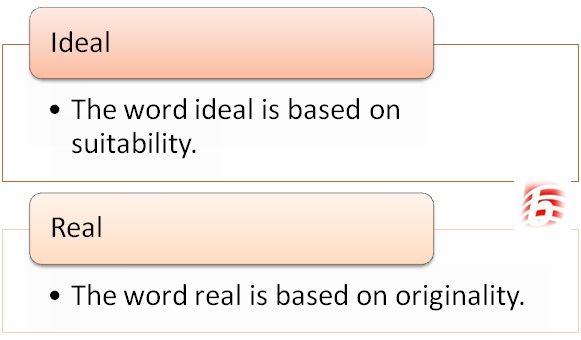Ideal vs Real
Understanding the distinction between ideal and real is crucial, as these are two states with different meanings and connotations. Ideal refers to something that is better suited for a specific purpose, while real pertains to something that is permanent. From a linguistic perspective, real functions as both an adjective and an adverb, while ideal serves as an adjective and a noun. Notably, both terms have origins in late Middle English. The adjective real has a derivative, realness, while the noun forms of ideal and real are ideality and reality, respectively.
Meaning of Ideal
The term ideal is commonly employed to describe something as suitable. For example, when the weather conditions are deemed “ideal” for a game of cricket or a person is considered the “ideal” candidate for a job, the word signifies suitability in both cases. In these instances, ideal functions as an adjective. Sometimes, the adverbial form of the word, “ideally,” is used, as in the phrase “It was ideally spoken by him.”
Meaning of Real
In the realm of metaphysics, a real object is one that cannot be destroyed, is true, ever-present, all-knowing, and omnipotent. This concept refers to the Supreme Entity or the Absolute, which has neither birth nor death and represents the only reality. The term real is based on authenticity and valid experiences, and it is sometimes used to convey originality. For instance, in the sentence “The fight between the two enemies was the real fight,” the word real suggests that other fights were not original. The adverb form of real is “really,” which can also mean “truly.”
Key Takeaways
- Ideal is based on suitability, while real is based on originality and authenticity.
- The words function differently in sentences: ideal as an adjective or noun and real as an adjective or adverb.
- The adverbs of ideal and real are “ideally” and “really,” respectively.
